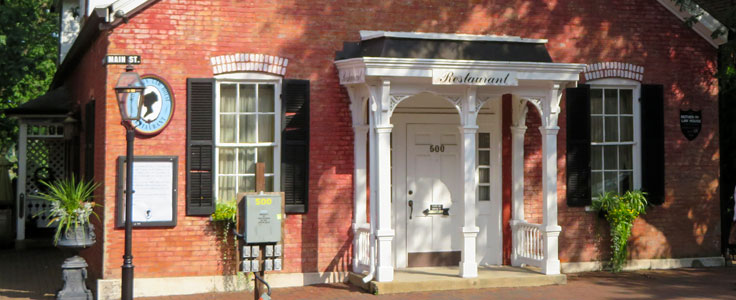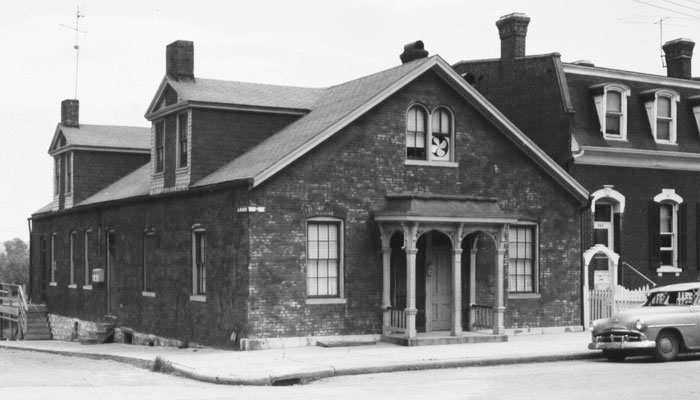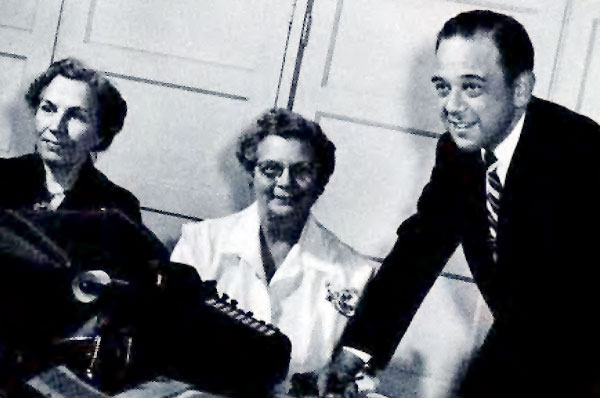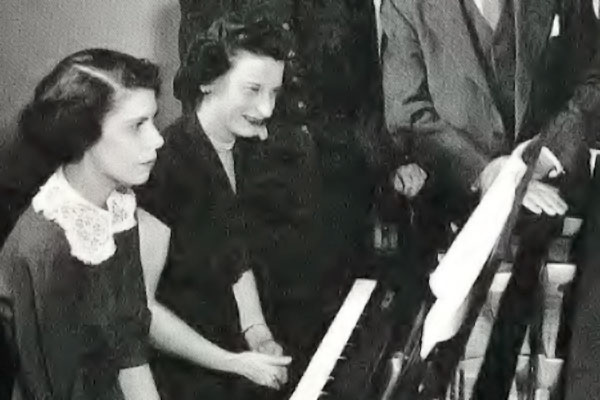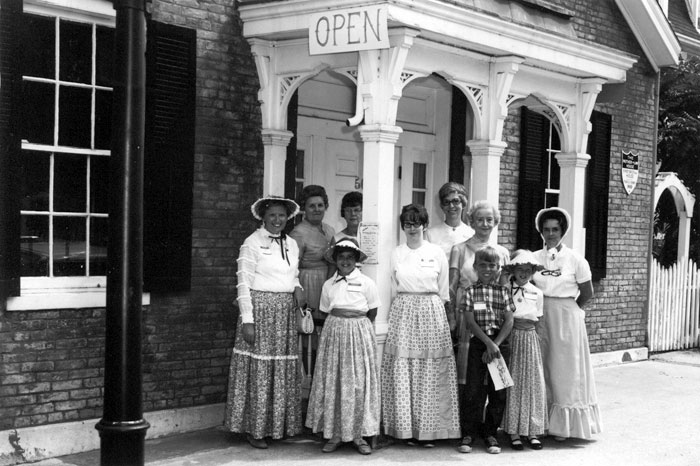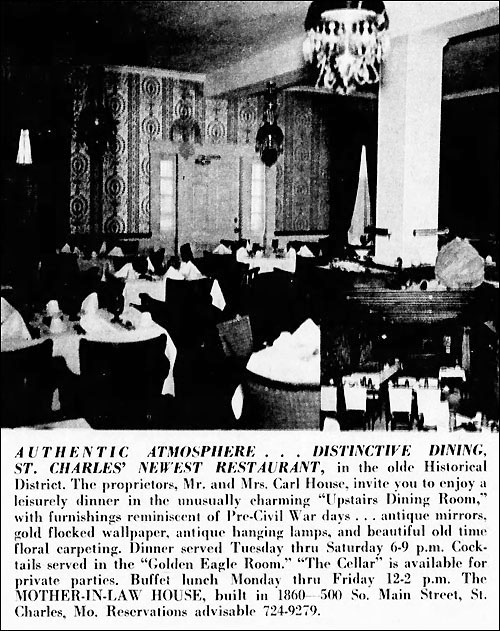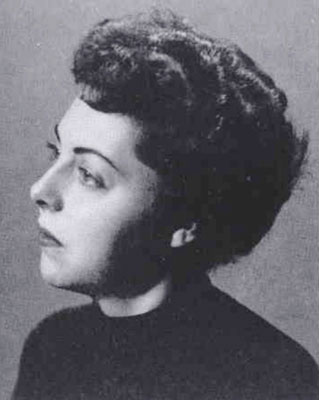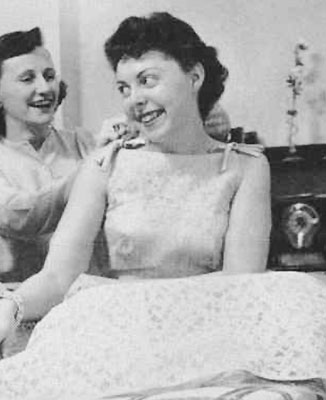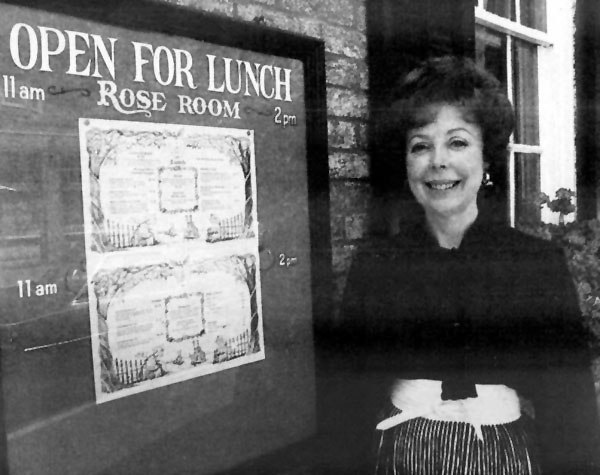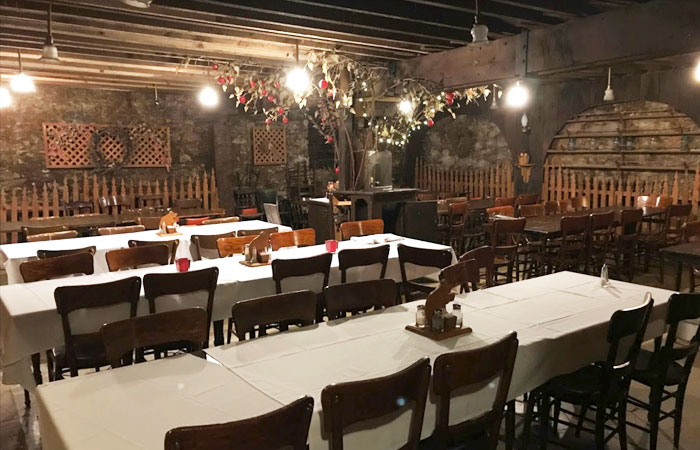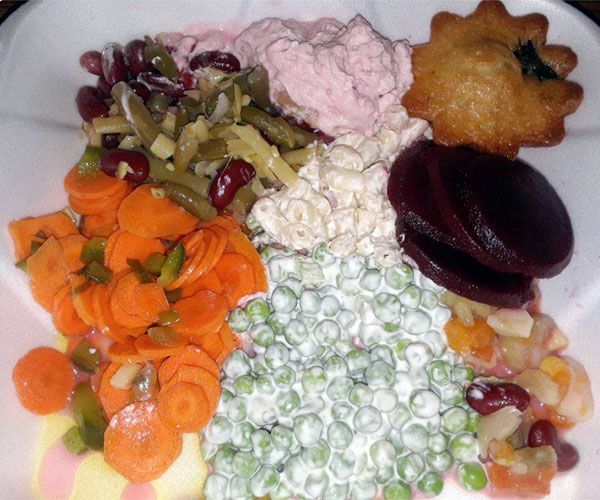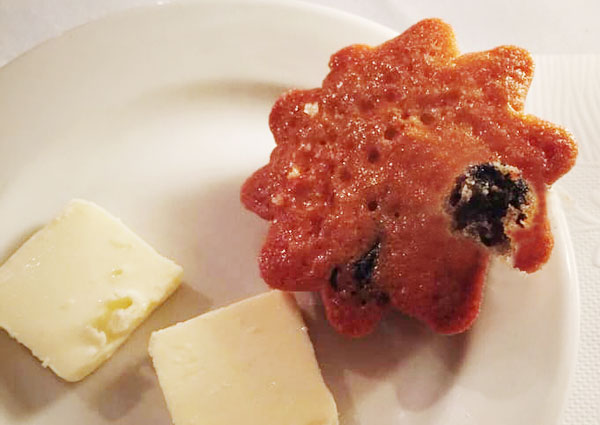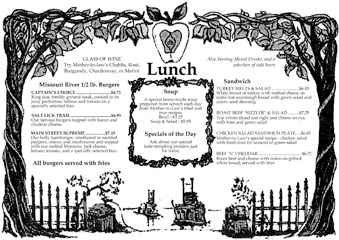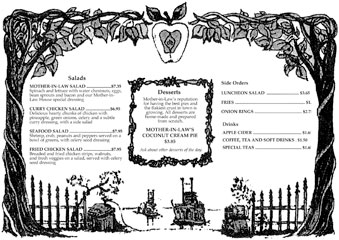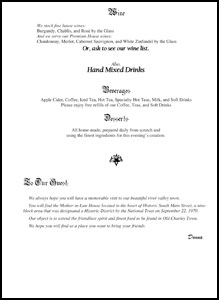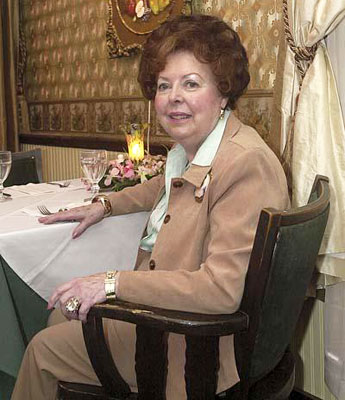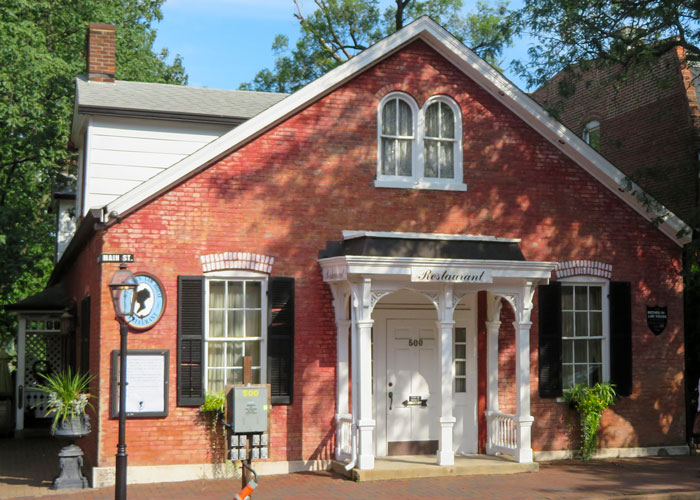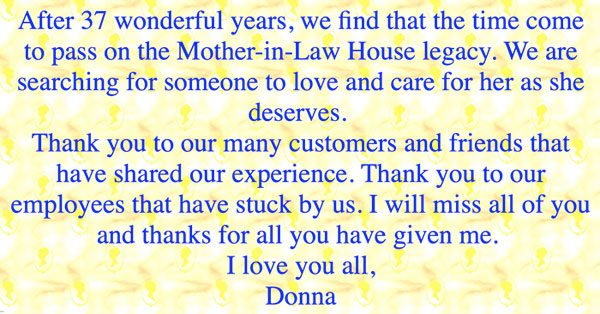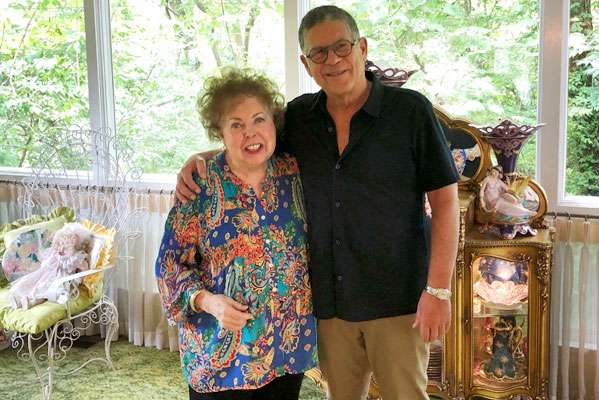|
Mother-In-Law House Legend has it that the Mother-In-Law House, at 500 South Main Street in St. Charles, was built by Francis X. Kremer in 1860. Because his young bride from Germany missed her mother, Kremer built the house with one side for himself and his wife, and the other side for his mother-in-law. To welcome her from Germany, Kremer invited the residents of St. Charles to a street party with a brass band. He presented his mother-in-law with a key to her half of the house, with the humorous provision that she stay on her side. For years, this story was told in guide books, by tour guides and by the owners of the Mother-In-Law House, which was reputed to be the first "double house" in St. Charles. However, the Mother-In-Law House story may indeed be legend. Kremer's bride, Minna Carolina Becker, was born in Missouri – not Germany – on January 13, 1837. The two were married in St. Charles County on July 27, 1855. Census records from 1860, 1870 and 1880 show the Kremers living in St. Charles with only their children – and no mother-in-law.
Researcher Mitzi Smith
found that in 1865, Kremer built his St. Charles home at 514 South
Main – not at the 500 address. In 1866, he bought a warehouse at 500 South
Main, which he used to store grain for his
flour mill. In 1876, after the warehouse was destroyed by a tornado, Kremer rebuilt
it as a two-story brick building. The warehouse was converted into tenements
before the turn of the century.
* * * * *
Carl Clark House, Jr. was born on March 8, 1921
in Midland Michigan. He grew up and was educated in Buffalo, New
York and Ridgeway, Ontario, Canada. At the age of 17,
After the war, House embarked on a restaurant
career, working at the Brown Derby in Hollywood and for Pope's
Cafeterias in St. Louis. By the early 1950s,
he was Director of Food Service at Lindenwood College in St.
Charles. It was there, in the faculty corner of the dining room, that House met Virginia Lee Winham.
The two were married in 1953.
By 1964, Carl and Virginia House had purchased
the warehouse Francis Kremer had rebuilt in 1876, although they
believed it to be a "double home" built in 1860 for Kremer's
homesick bride's mother. They renovated the building and began
hosting private parties. In 1969, the year of the St. Charles
Bicentennial, the Mother-In-Law House restaurant was open to the
public.
Virginia House served as the restaurant's hostess, bookkeeper and cashier. She also enforced the Mother-In-Law House dress code: Men must wear jackets and ties. Hot pants and uncoordinated outfits are not acceptable for women. After hanging their coats on brass hooks in the central hall, diners would wait in the restaurant's lounge for their table. In one corner was a bar resembling the pilothouse of a Missouri riverboat, with a large lantern overhead.
The high-ceilinged main dining room, with its
large windows, had been created by tearing out the walls of four
adjacent rooms. It featured flowery deep-red carpet, old fashioned
wainscot under muted gold and deep-rose wallpaper, rich burgundy
draperies, and great oil lamps which shed a dimmed electric light on
white-linened tables and sparkling silverware. The dining room
seated 54 persons.
In the center of the dining area was a supporting post surrounded by a magnificent salad bar, so grand it could make a salad buff forget about appetizer, entree and dessert. There were four bean salads (green beans, wax beans, kidney beans with sliced water chestnuts and garbanzos), Bismarck herring and sour cream, tiny beet balls and dilled tomatoes, pickles, olives, dilled Brussels sprouts, broccoli, sweet cauliflower, pickled okra, smoked oysters, cucumbers and sour cream (with horseradish added for tartness), chicken liver pate (from a Molly Goldberg recipe), a sweet-sour slaw, potato salad spiced with mustard, carrot salad with a special fruit dressing, pea salad (with cheddar cheese, onion, celery, hard-cooked eggs and mayonnaise dressing), red cabbage in crocks, a sauerkraut salad (the sauerkraut taste was cooked out and onions, celery, pimento, sugar, pepper, wine vinegar and salad oil were added), and for pedestrian tastes there was an ordinary tossed salad with a variety of dressings. Half of the Mother-in-Law House's business was in a downstairs dining area, with original rock walls, called The Cellar. The original dirt floor was covered over with bricks, taken from a century-old tavern, and exposed floor joists of white pine. Supporting posts were walnut and arches were of wood reclaimed from an old grain mill. The Cellar, which seated 75 diners, was only open for buffet lunch. Originally intended for patronage by St. Charles businessmen, The Cellar did poorly until it was discovered by the many women who patronized the area's antique shops. * * * * * In early 1980, Carl and Virginia House put the Mother-In-Law House up for sale and moved to Hermitage, Tennessee. The restaurant initially remained open, managed by Robert and Catherine Kreis, but closed early in 1981 and sat vacant. * * * * *
Born and raised on a farm in Gillespie, Illinois, Donna
Mae Drury came to St. Charles on a scholarship to attend Lindenwood
College, where she majored in home economics. While in school, she met Ralph Hafer,
a hometown St. Charles boy. The two
fell in love and were married in 1956, the day after she graduated
from Lindenwood.
After graduation and marriage, Donna Drury Hafer got a job at St. Charles High School, teaching science and home economics. She became interested in antiques and opened a shop on South Main Street. Hafer fell in love with South Main. "I just fell in love with those beautiful houses. I did. I just loved them." In the early 1970s, Hafer bought the home across the street from her antique shop, fixed it up and rented it out. She continued buying and restoring South Main homes until her mother died in 2002. "I don’t have to be good anymore and make anybody proud," she explained at the time. In 1978, Emily Grigsby, the owner of the Copper Platter at 625 South Main, put her restaurant up for sale. "I loved The Copper Platter," recalled Hafer. "I loved the food. And in fifteen minutes, I bought it!" Hafer knew nothing about the restaurant business. But she inherited a server with her new restaurant, named Betty Mary.
After two years as a restaurateur, Hafer wanted a larger restaurant. She knew Carl House from her days at Lindenwood. "I knew him quite well because we planned parties together and had a good time." In early 1981, Carl House's restaurant at 500 South Main was for sale. "I always loved Mother-In-Law House," Hafer recalled. "So I jumped off the board and there I was with a restaurant."
The dining room,
called the Rose Room, was redecorated with gold wallpaper and
deep-red chairs and draperies. The crimson and rose carpeting was a
replica of a pattern popular at the time the building was
constructed. The bar area was redecorated in dark wood, with round
tables covered with green and melon color tablecloths. Seating
capacity for the Rose Room was 56 people.
The basement of the building was redecorated in
country style and dubbed the Cider Cellar. The rough wood and cement
floor was complemented by stone walls adorned with picket fencing.
Jars of vegetables, as well as dried corn and flowers, were used in
the decoration, along with a player piano. The Cider Cellar seated
100 people at tables covered with yellow-and-white checkered
tablecloths.
While the Copper Platter was open only for lunch, the Mother-In-Law House served both lunch and dinner.
Many of the recipes used at the Mother-In-Law House were gathered from Hafer's family and friends. The salad bar, especially, was a collection of homemade delicacies, with a story behind each one.
The blueberry muffins, brought hot to the table as they came out of the oven, were Hafer's own recipe. They were made in antique iron muffin tins, of which she had only three. On a busy Saturday, keeping up with the demand was sometimes a losing battle.
The Mother-In-Law House lunch menu
included hand-made fresh hamburgers, specialty salads, hot grilled
sandwiches, and home-made soups.
The dinner menu was
relatively small. Entrees included three beef items, several chicken
choices, fried shrimp and the catch of the day. There were also
several specials each night. The restaurant's most famous dish was its coconut cream pie, compliments of Lorraine "Rene" Zwickey.
In 1996, Hafer replaced her Copper Platter restaurant with the Haviland Platter, a combination cafe and museum. In 2001, she opened a candy store – Something Sweet– in the space. But Hafer's Mother-In-Law House restaurant continued to thrive – and so did she.
On September 9, 2018, a message appeared on the
homepage of the Mother-In-Law House website.
Hafer sold the Mother-In-Law House to John and Bridgette Hamilton, who would use it as a second location for their "Rack House Kitchen Wine Whiskey" restaurant in Cottleville, calling it "Tompkins by The Rack House."
Copyright © 2024
LostTables.com |
|||||||||||||||||||||||||||||

